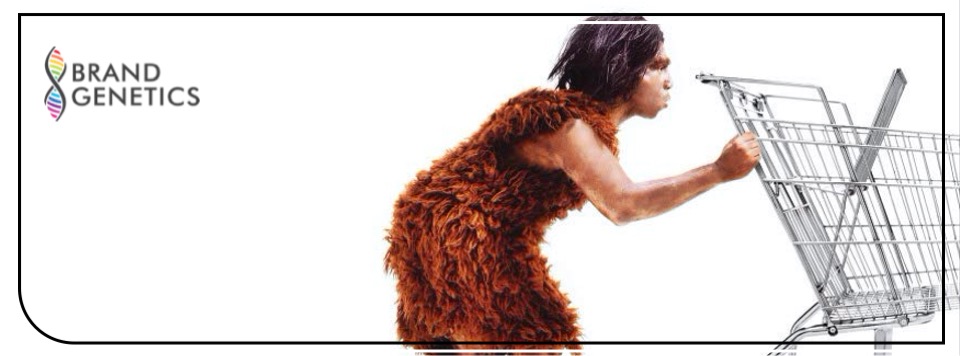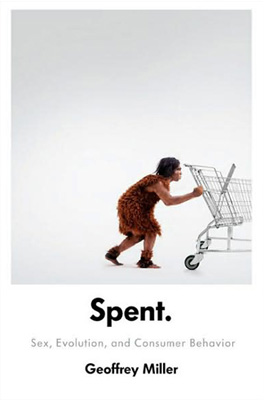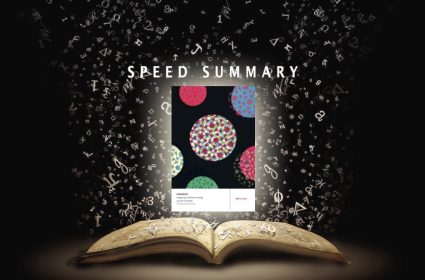Spent Speed Summary: Sex, Evolution and Consumer Behavior

 Spent: Sex, Evolution and Consumer Behavior
Spent: Sex, Evolution and Consumer Behavior- Author: Geoffrey Miller
- Publisher: Viking
- Publication date: July 2, 2009
Spent by Geoffrey Miller, professor of evolutionary psychology at the University of New Mexico, is a followup to his bestseller on evolutionary psychology, The Mating Mind. This time however, Miller focuses on consumer psychology rather than the psychology of sexual relationships. Why we buy what we buy, rather than why we mate with who we mate.
The central thesis is the same, that our minds are hardwired by millennia of evolution to find certain things and certain people attractive. Facial symmetry, waist to hip ratios of 0.7, height, salt, sugar, fat and the colour blue. Look into consumer preferences and you’re looking into our hunter-gatherer past, with the promise that evolutionary consumer psychology is more insightful than any focus group or survey.
Miller’s trademark focus is Darwin’s second evolutionary process – evolution by sexual selection as opposed to natural selection. The peacock tail does not confer any adaptive ‘survival of the fittest’ advantage on its owner, it has nothing to do with natural selection. Rather, it has everything to do with sexual selection – it became a selected trait because it signals good genes (like facial symmetry) to potential mates.
For Miller, consumer psychology is a vast excursus into peacock tail psychology, we buy what we buy to signal our good genes to potential mates, or to those that can help us get good mates. We do this instinctively, below the level of consciousness, signaling our own unique peacock tail through conspicuous consumption. All the world’s a stage, it’s all about sex, and the Apple iPad is the 2010 peacock tail.
The new news in Miller’s work is that conspicuous consumption is not just about signaling the 3 evolutionary S’s – Sex (reproductive fitness), Status (power), and Survival (health); it’s more subtle than that.
Specifically, it’s about signaling our personality, made up of the six universal human personality traits that we all share. Just as we all share the same 23 pairs of chromosomes in each of about 50 trillion cells, we all have the same 206 bones and 640 muscles, and we all get to enjoy about 600 million breaths before we die, research has conclusively shown that we share the same 6 key personality dimensions – ‘the Central Six’ – that make up our characters.
In a nutshell, consumer behaviour can be understood as a signaling strategy to communicate our personality profile to others, the ‘DNA’ of personality made up by an ‘iOCEAN’ mnemonic.
The first, and most important personality trait in terms of its predictive power is ‘i’ – general intelligence (also known as ‘g’, and measured by the IQ test), which, like the other 5 traits, varies according to a Bell Curve normal distribution throughout any population. Generally, the more intelligence you can signal with your purchasing behavior, the better (you can test yourself here to measure your true, rather than signaled i)).
The attractiveness of what you signal on other ‘Big 5’ OCEAN personality traits – openness, conscientiousness, extraversion, agreeableness, neuroticism – varies with context and situation (you can map your profile on these dimensions here). The key point is that your signaling should differentiate you from the competition.
The practical upshot of all this for marketers is that it makes sense to segment markets and position brands based on these six strands of ‘personality DNA’, because in doing so you are carving your marketing strategy at nature’s joints. Rather than use “hopelessly muddled”, “seriously outdated”, contradictory and discredited models for which there is little evidence – i.e. Maslow’s hierarchy of needs, smart marketers will profit from an evidence-based understanding of consumers based on signaling theory and personality profiling.
The key point here is that powerful brands should act as powerful signaling tools to communicate specific personality traits and profiles; a brand that appeals to everyone has no signaling utility and therefore is unlikely to succeed. Whether planned or by happenstance, brands are adopted as signaling tools for personality traits. To illustrate, Miller segments the auto industry (US) based on personality traits i.e. what your car signals about your personality:
- High Intelligence: Acura, Audi, BMW, Lexus, Infinit, Smart, Subaru, Volkswagen
- Low Intelligence: Cadillac, Chrysler, Dodge, Ford, GMC, Hummer
- High Openness: Lotus, Mini, Scion, Subaru
- Low Openness: Buick, Lincoln, Oldsmobile, Range Rover, Rolls Royce
- High Conscientiousness: Acura, Honda, Lexus, Volvo, Toyota
- Low Conscientiousness: Ferrari, Jeep, Mitsubishi, Pontiac
- High Extraversion: Aston Martin, BMW, Ferrari, Mini, Porsche
- Low Extraversion: Acura, Hyundai, Lexus, Saab, Subaru, Volvo
- High Agreeableness: Acura, Daewoo, Geo, Kia, Saturn
- Low Agreeableness: BMW, Hummer, Maserati, Mercedes, Nissan
- High Neuroticism: Volkswagen, Volvo
- Low Neuroticism: Acura, Porsche, Scion
In sum, Spent argues that personality profiling as a branding, planning and segmentation tool offers marketers the opportunity to do what they do better: fulfilling human desires by producing goods and services that people will buy.
And if you’re looking for an i120-O80-C41-E83-A63-N1 (my personality profile, or ‘trait tattoo’ as Miller calls it), you know where to find me.




